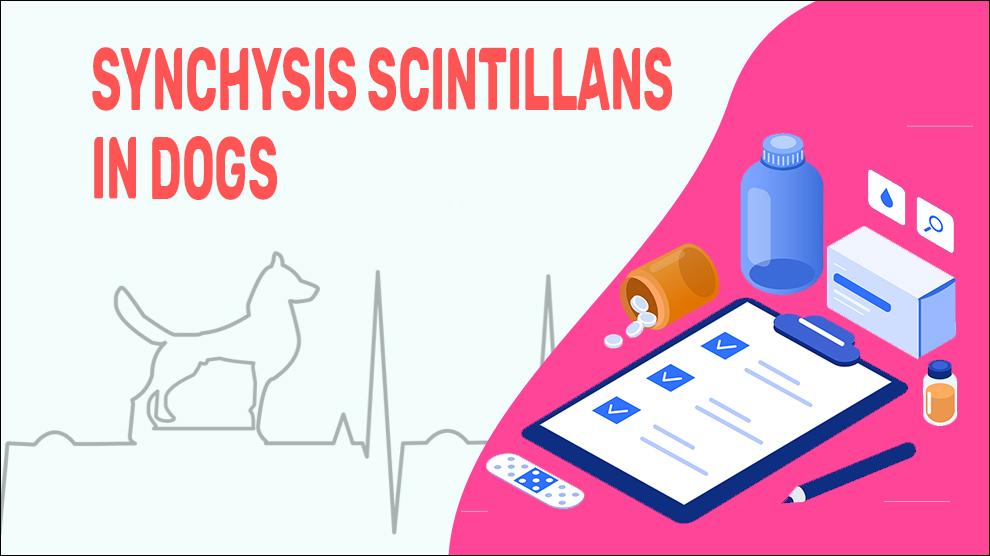What Is Synchysis Scintillans In Dogs?
Synchysis scintillans is a deteriorating condition of the eye due to chronic vitreous hemorrhage. There is an accretion of cholesterol crystals inside the vitreous humor and the formed crystals have multiple vitreous opacities that are mobile, flat, and golden brown in color. Due to the presence of cholesterol crystals in these opacities, they are also known as “cholesterolosis bulbi”.
This is the most severe form of vitreal degeneration and the occurrence of cholesterol crystals was established in these opacities. The process of vitreous liquefaction is called syneresis. The tiny refractile crystals move around freely with the movement of the eye with the collagen displaced peripherally. Eventually, the crystals settle down and inhabit the gravity-dependent region of the vitreous cavity.
The exact etiopathogenesis is unknown but Synchysis scintillans are connected with the dogs affected with diabetic retinopathy. Synchysis scintillans may crop up after recurring (chronic) vitreous hemorrhage or chronic uveitis and/ or injury to the eye. Crystalline opacities may be diagnosed in the vitreous as the bulk hemorrhage disperses, or they may look like tiny, round, mobile, whitish-brown, glistening crystals in the front chamber.
Synchysis scintillans are typically observed in the vitreous cavity, but there are documented cases of synchysis scintillans in the anterior chamber due to anterior mobilization of the vitreous through the iris pupillary area and lens subluxation. This can affect one or both of your dog’s eyes and this condition is also observed in deteriorating eyes prior to the start of phthisis bulbi.
Symptoms Of Synchysis Scintillans In Dogs
- Small white spots or floaters in the field of vision, then sink towards the eye globe
- Small, flat, multiple refractile particles inside the vitreous humor
- Reduced visual sharpness
Treatment Options For Synchysis Scintillans In Dogs
Most commonly, treatment is not needed. However, it is better to get the suggestion of a veterinary ophthalmologist as the eyes are involved. Supportive therapies are suggested, for instance, eye supplements may be beneficial.
Once properly diagnosed, treatment is geared towards maintaining overall eye health and preventing the progression of Synchysis scintillans.
Vitrectomy: This surgery is performed to attach the detached retina and remove hemorrhage in or at the back of the vitreous or proliferative membranes. Using a vitrectomy probe, a portion or all of the vitreous humor is peeled or sucked out from the affected eye.
Retinopexy: This is a minimally invasive technique recommended to fix detached retinas in such a situation.
Home Remedies For Synchysis Scintillans In Dogs
- Home-cooked diet, with wholesome, nutritious foods as a substitute for commercial diets.
- Once the surgery is over, activities of your dog should be restricted for about 2 weeks to allow recuperation and incision healing.
- A restrictive e-collar can be used for 2 weeks.
How To Prevent Synchysis Scintillans In Dogs?
The causes of Synchysis scintillans in dogs are unclear so prevention is not possible.
As most canine eye diseases are hereditary, there’s not much a pet owner can do to prevent them, but a therapeutic diet with eye supplements may help in one way or another.
Discuss with your veterinary ophthalmologist to know what is the appropriate diet for your dog’s eyes and overall health.
Affected Dog Breeds Of Synchysis Scintillans
- Female dogs are more overrepresented.
- Middle-aged to older dogs are more reported.
Causes And Prognosis For Synchysis Scintillans In Dogs
1. Causes:
Some studies suggest links between Synchysis scintillans and other health issues, such as:
- High cholesterol
- Higher body mass index
- High blood pressure
- Diabetes
- Heart disease
- Hereditary pigmentary retinopathies
2. Mortality:
The mortality rate associated with this condition is not yet documented.
3. Diagnosis:
- Complete blood count and a serum chemistry panel
- Skull x-rays
- Orbital ultrasound
- Biopsy of the eye orbit
- CT SCAN/MRI
4. Prognosis:
The exact pathogenesis of Synchysis scintillans remains unclear; however, liquefaction of the vitreous occurs with age as fatty globules settle within the vitreous spontaneously. described as "floaters" in the vitreous, small yellowish-white precipitates deposited inside the gel.
Vitreous Syneresis: Floaters may develop when a dog experiences an inflammatory event in the eye, alongside degeneration of the vitreous gel itself, leading to liquefaction of the gel. There is no reason to worry about this age-related disorder as loss of vision is very rare.
When To See A Vet For Synchysis Scintillans In Dogs?
Contact your vet right away, if you notice any of the following:
- Small white spots or floaters in the field of vision, then sink towards the eye globe.
- Small, flat, multiple refractile particles inside the vitreous humor.
When To See A Vet For Synchysis Scintillans In Dogs?
- High protein diet with complex carbs and good fats
- Protein should comprise 40% of dogs’ calories. Fresh, lean protein (Lean white fish such as cod, grouper, haddock, lean cuts of beef, pork loin)
- Fats: Salmon, herring, mackerel, lake trout, tuna, and sardines
- Complex Carbs: Brown Rice, Oatmeal, Whole Grains, Sweet Potatoes, etc
- Vitamin-rich fruits and veggies: Legumes, snap peas, green beans, carrots, cauliflower, broccoli, cabbage, tomatoes, citrus fruits, Blueberries, strawberries, cherries, etc
Conclusion
Early detection and appropriate treatment offer the most favorable prognosis. This highlights the importance of eye checkups as part of a routine physical examination in all dogs.

















